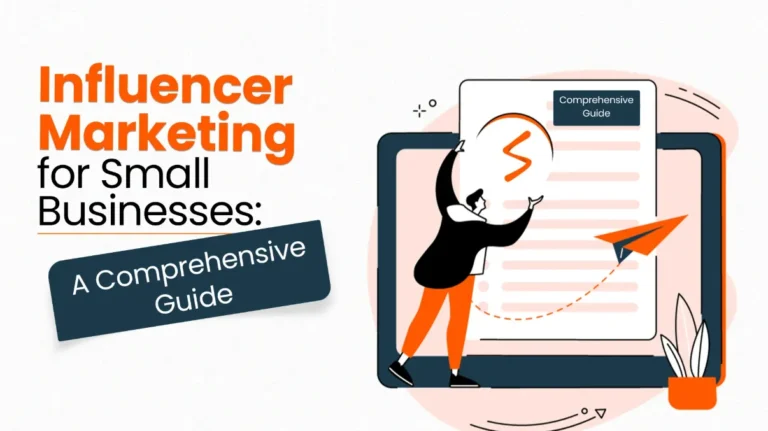Introduction
In the competitive world of small businesses, gaining visibility often requires innovative and cost-effective strategies. Influencer marketing has emerged as one of the most impactful methods to boost brand awareness, engage audiences, and drive conversions. Whether you collaborate with a mega influencer or collab with micro influencers to boost your small business marketing, this guide offers actionable tips to help you succeed.
Let’s explore how you can leverage influencer marketing to elevate your small business and ensure a strong return on investment (ROI).
What Is Influencer Marketing?
Influencer marketing involves partnering with individuals who have a loyal following on social media to promote your products or services. These influencers bring credibility, creativity, and access to a targeted audience that aligns with your brand.
Small businesses often find influencer marketing beneficial due to its affordability and measurable results. While mega influencers can provide a broad reach, micro, macro, and nano influencers can connect with niche audiences and deliver higher engagement rates.
Key Steps to Implement Influencer Marketing for Small Businesses
1. Plan Long-Term Campaigns
Short-term campaigns often yield sporadic results. Instead, focus on building long-term relationships with influencers who align with your brand values and marketing goals.
- Content Strategy: Create batches of content in one session and release them over time.
- Consistency: Long-term collaborations foster trust and credibility with the audience.
For instance, a local coffee shop partnered with a lifestyle influencer over six months, showcasing seasonal menus and customer stories. This resulted in a 25% increase in foot traffic and brand loyalty.
2. Choose Influencers Carefully
Selecting the right influencer is pivotal for campaign success. Before finalizing a collaboration, consider:
- Audience Demographics: Ensure the influencer’s audience aligns with your target market.
- Engagement Rates: Prioritize influencers with high engagement over large follower counts.
- Relevance: Choose influencers who genuinely resonate with your industry.
For example, a skincare brand targeting eco-conscious millennials achieved higher ROI by collaborating with a nano influencer known for sustainable living tips.
3. Stay Updated on Trends
Social media trends evolve rapidly. Both you and your influencers should monitor these trends to stay relevant.
- Hashtags: Use trending hashtags to expand reach.
- Content Types: Leverage popular formats like reels or stories to capture attention.
A bakery leveraged a trending “behind-the-scenes” video challenge to showcase its baking process, resulting in a 40% increase in Instagram followers.
4. Focus on Localization
When targeting a specific region, micro influencers are often more effective than mega influencers. They understand local culture and can create content that resonates deeply with their audience.
Tailoring campaigns for local consumers ensures relevance and builds stronger connections. Collaborating with micro influencers is a cost-effective way to engage niche audiences while delivering measurable results.
5. Incorporate Podcasts
Podcasts are a growing trend, offering small businesses a unique platform to showcase expertise and engage audiences. Invite influencers as guests to discuss industry-related topics, share insights, or explore trends.
For instance, a fitness studio launched a podcast featuring local health influencers. This not only increased studio memberships but also boosted the podcast’s popularity.
Monitoring and Measuring Success
Track Metrics Regularly
To ensure your influencer marketing efforts are effective, monitor key performance indicators (KPIs) like:
- Reach and Impressions: The number of people exposed to your campaign.
- Engagement Rates: Likes, shares, and comments on influencer content.
- Conversion Rates: Actions taken, such as purchases or sign-ups.
Evaluate ROI
Use this formula to calculate ROI:
(Revenue Generated – Campaign Cost) ÷ Campaign Cost x 100
For example, a small fashion brand invested $3,000 in a campaign with a fashion influencer and generated $15,000 in sales, resulting in a 400% ROI.
Conclusion
Influencer marketing offers immense potential for small businesses to grow their brand, connect with audiences, and drive sales. By carefully planning campaigns, selecting the right influencers, and tracking metrics, you can maximize your ROI and ensure sustained success.
Start small, stay consistent, and adapt to trends to make the most of your influencer marketing efforts.
